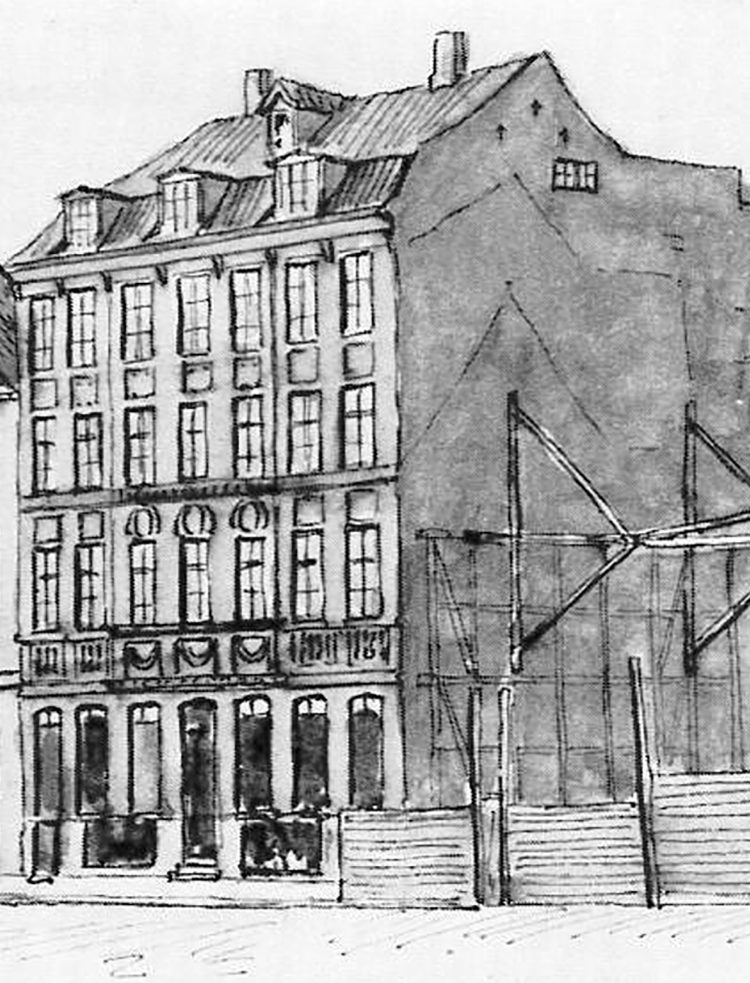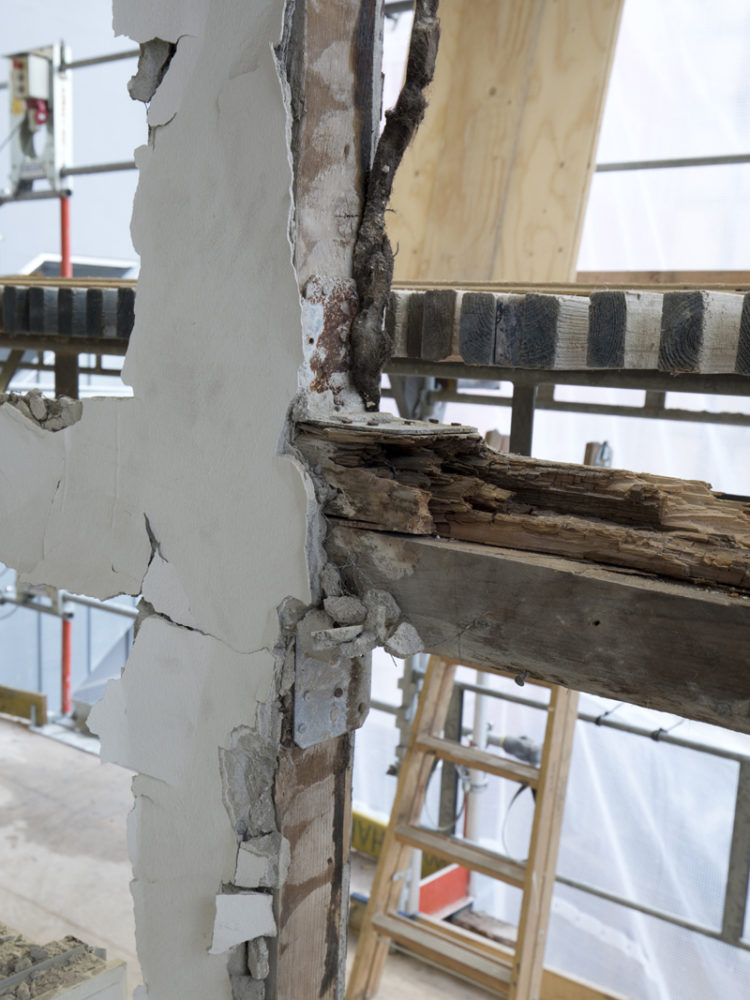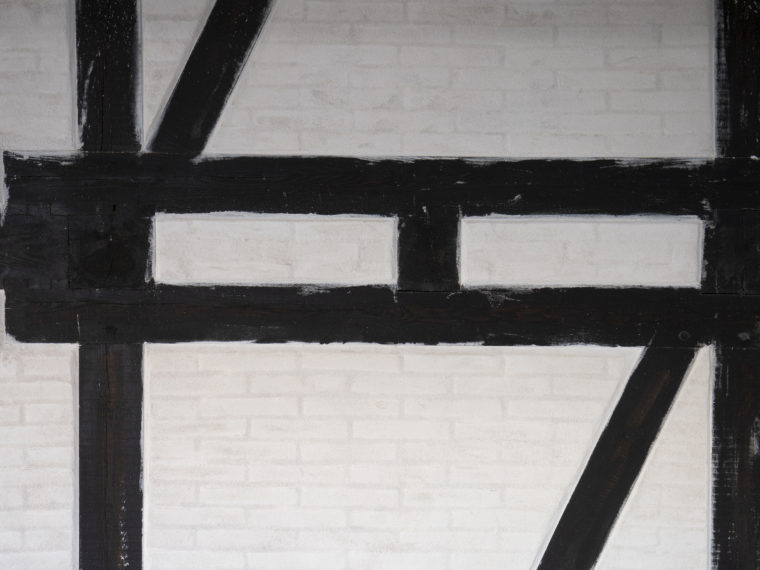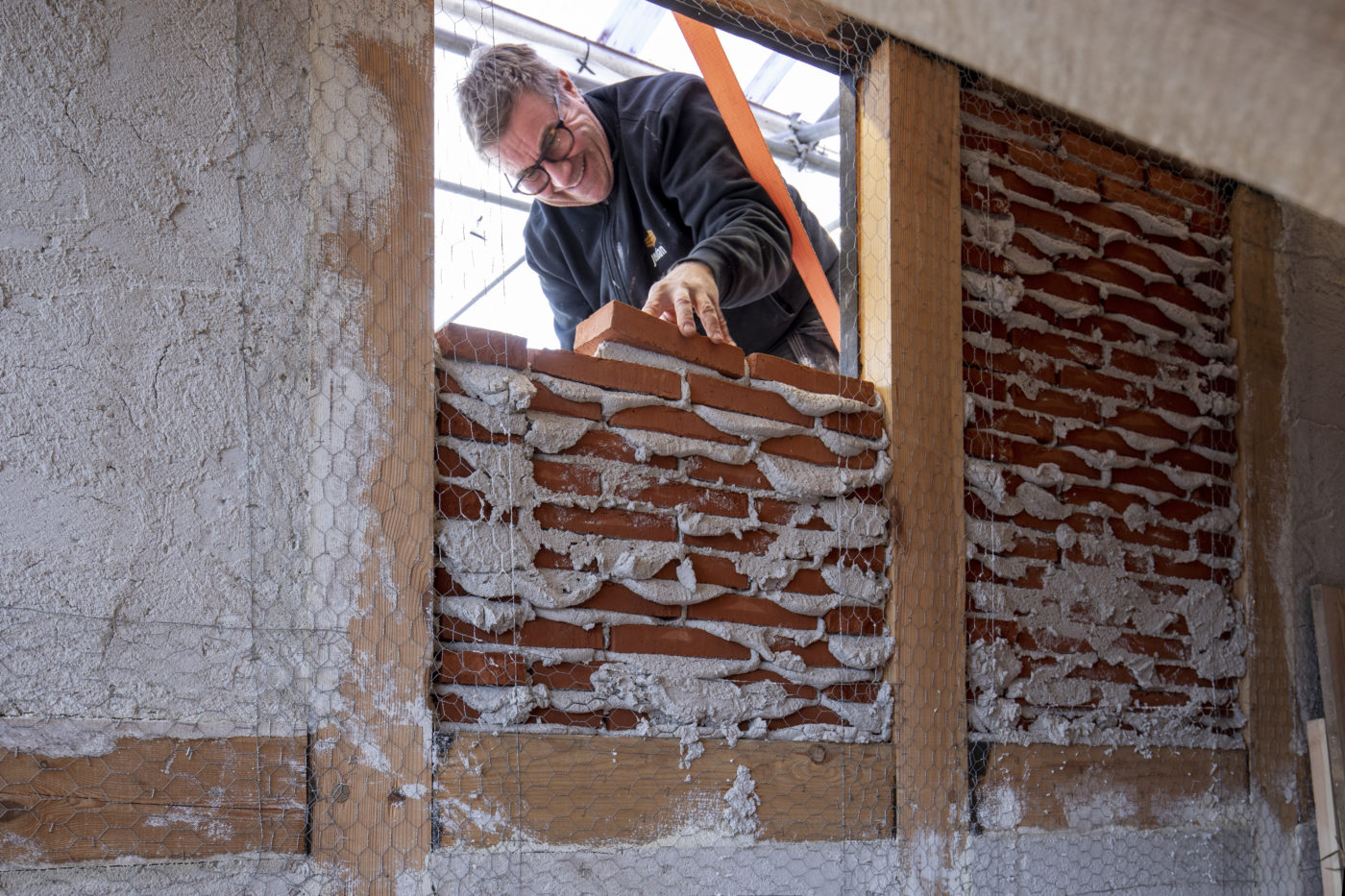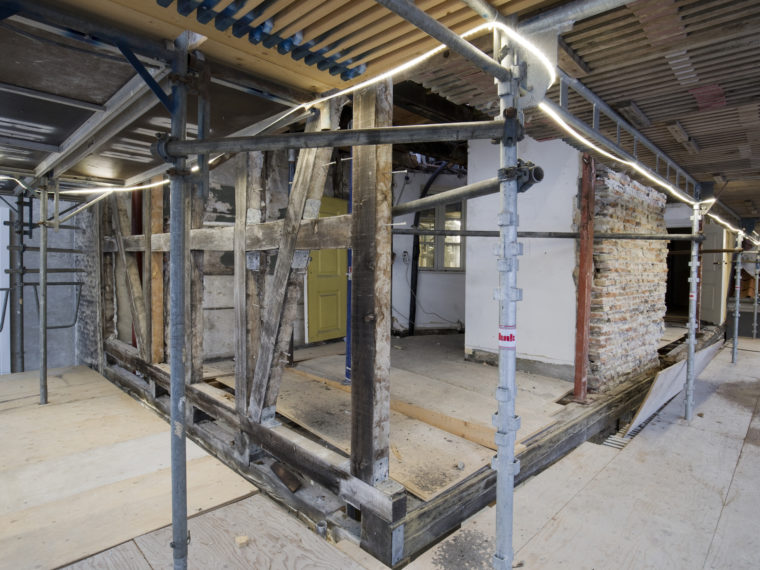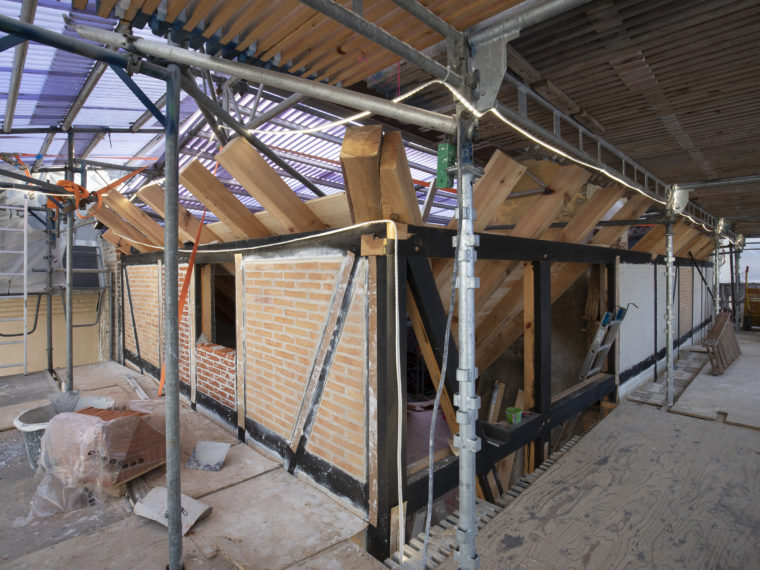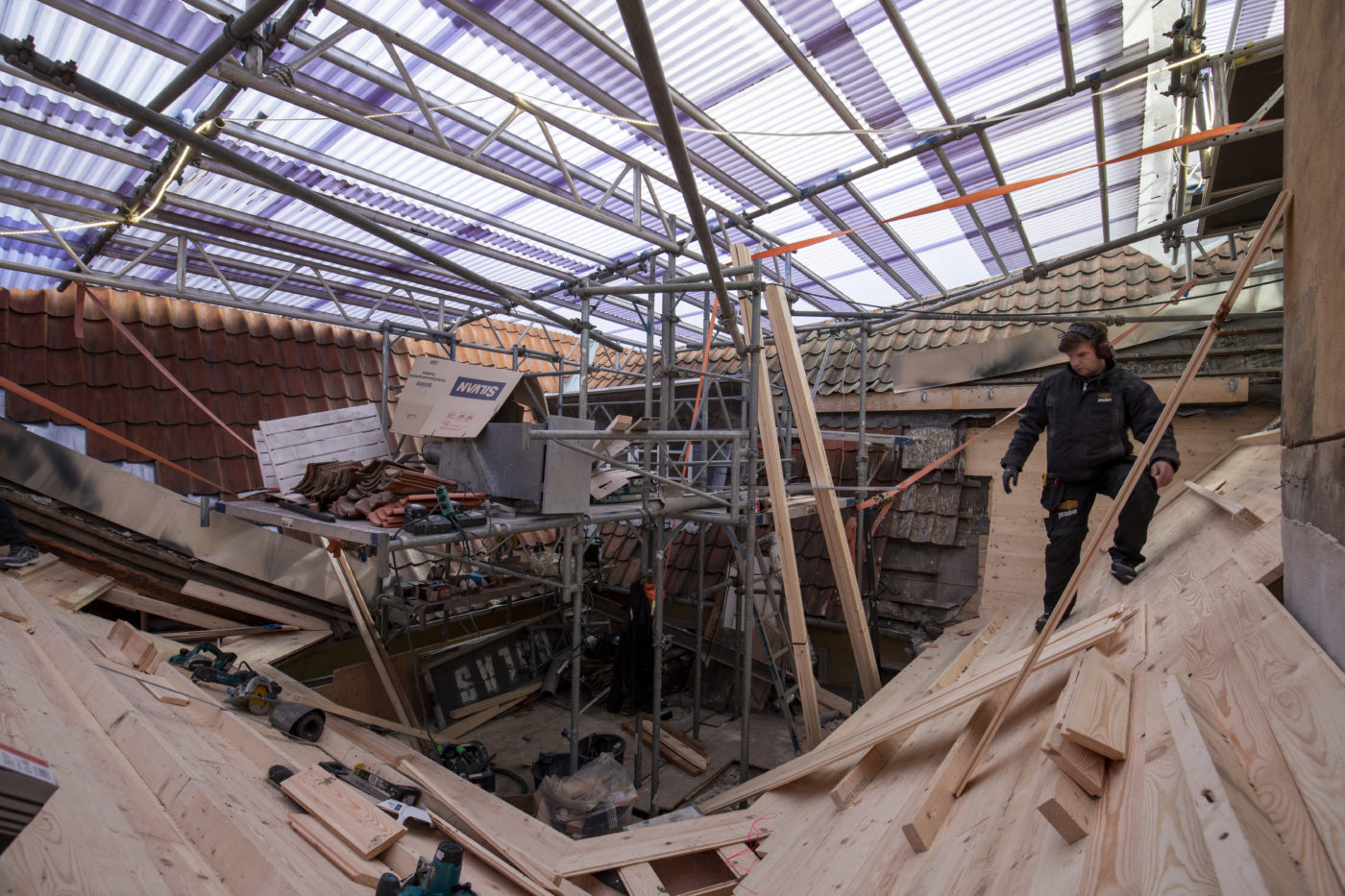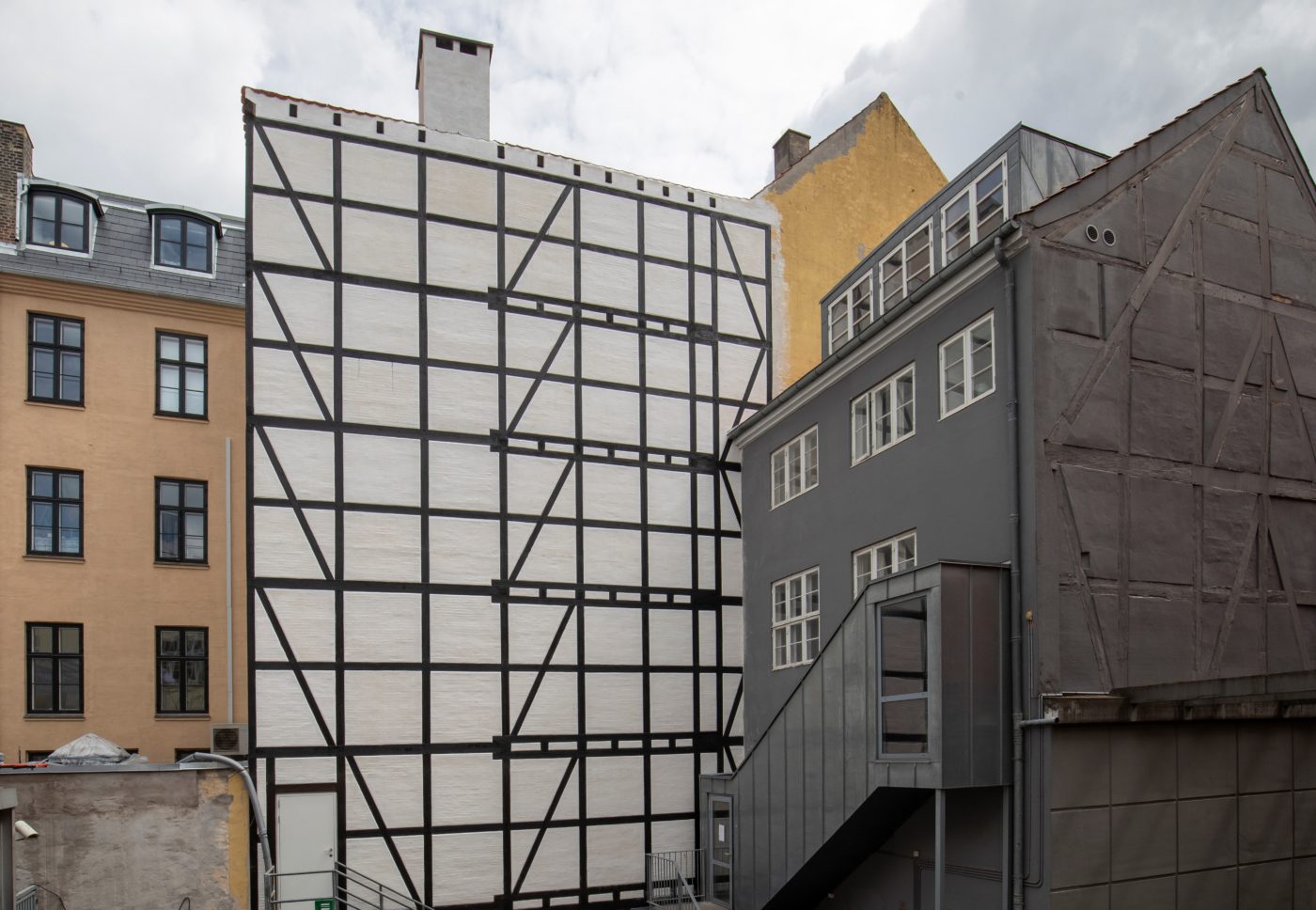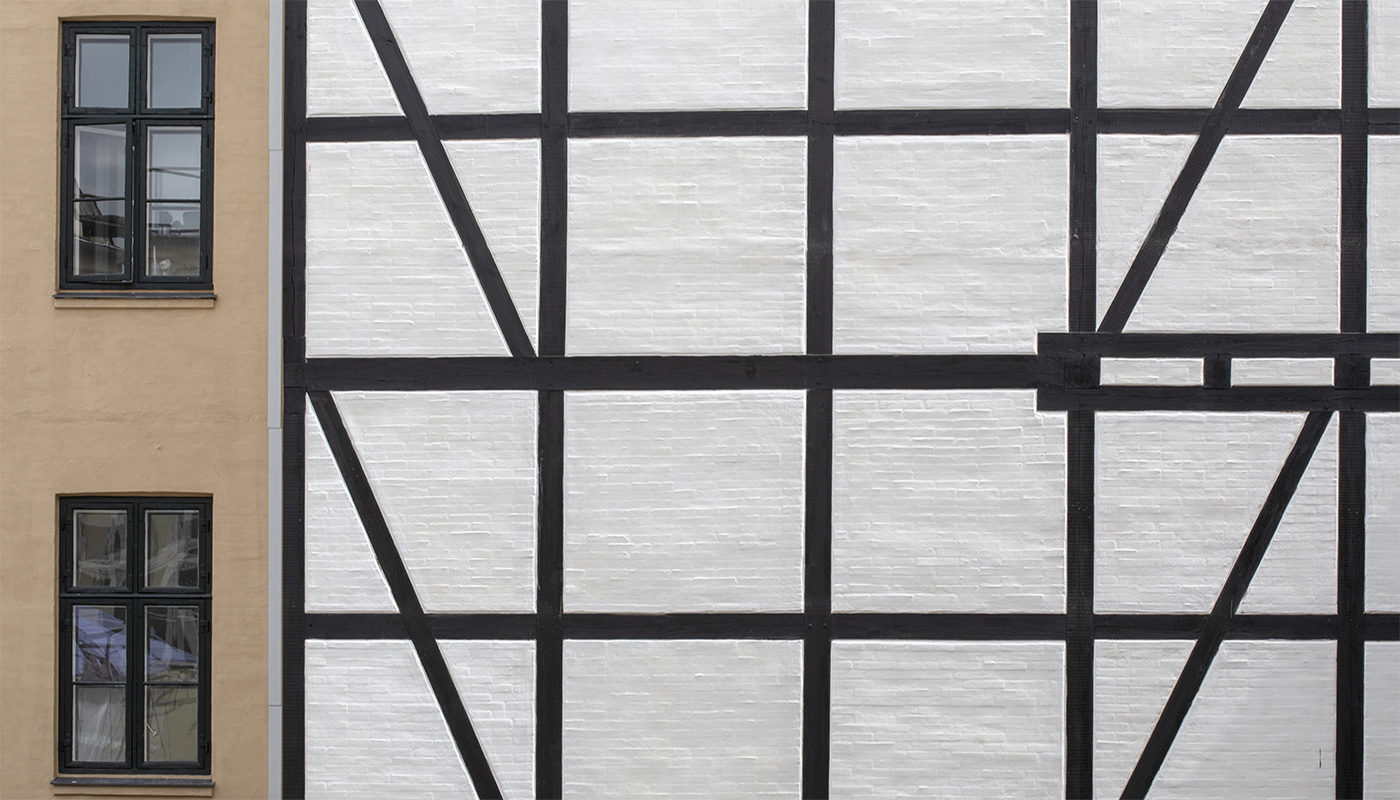
Antonigade 9
The rear house in Antonigade 9 in central Copenhagen was in dire need of refurbishment, as the woodwork in the half-timbered building, which was erected in 1766, had decayed and had extensive rot and fungal damage after a failed refurbishment in the last decades before the turn of the millennium. Therefore, we have now rebuilt the house according to old principles and with the traditional craftmanship in focus in order to preserve this piece of cultural heritage. In future, the building will again be used for residential and mixed-use purposes.
Year
2020-2021
Theme
Repair of extensive rot and fungal damage in the side and rear houses as well as reconstruction of half-timbered rear house
Client
Antonigade 9
Partners
Stokbro Rådgivende Ingeniører ApS
Address
Antonigade 9, 1106 København K
One of Copenhagen’s Oldest Streets
Antonigade is one of Copenhagen’s oldest streets and can be traced back to around AD 1400, when it formed the western end of Grønnegade.
In 1531, Antonigade is described as Lille Pilestræde in connection with the sale of a property in the street, which belonged to the Antonite convent in Præstø on Møn. After this Antonii House the street was called Antonistræde. Antonigade 9 was built by Hans Næss in 1766. Hans Næss (1723-1795) was an architect and teacher at the Royal Danish Academy of Fine Arts and was strongly influenced by the style of architect Nicolas-Henri Jardin (1720-99) and from 1770 also by architect C.F. Harsdorff (1735-99).
